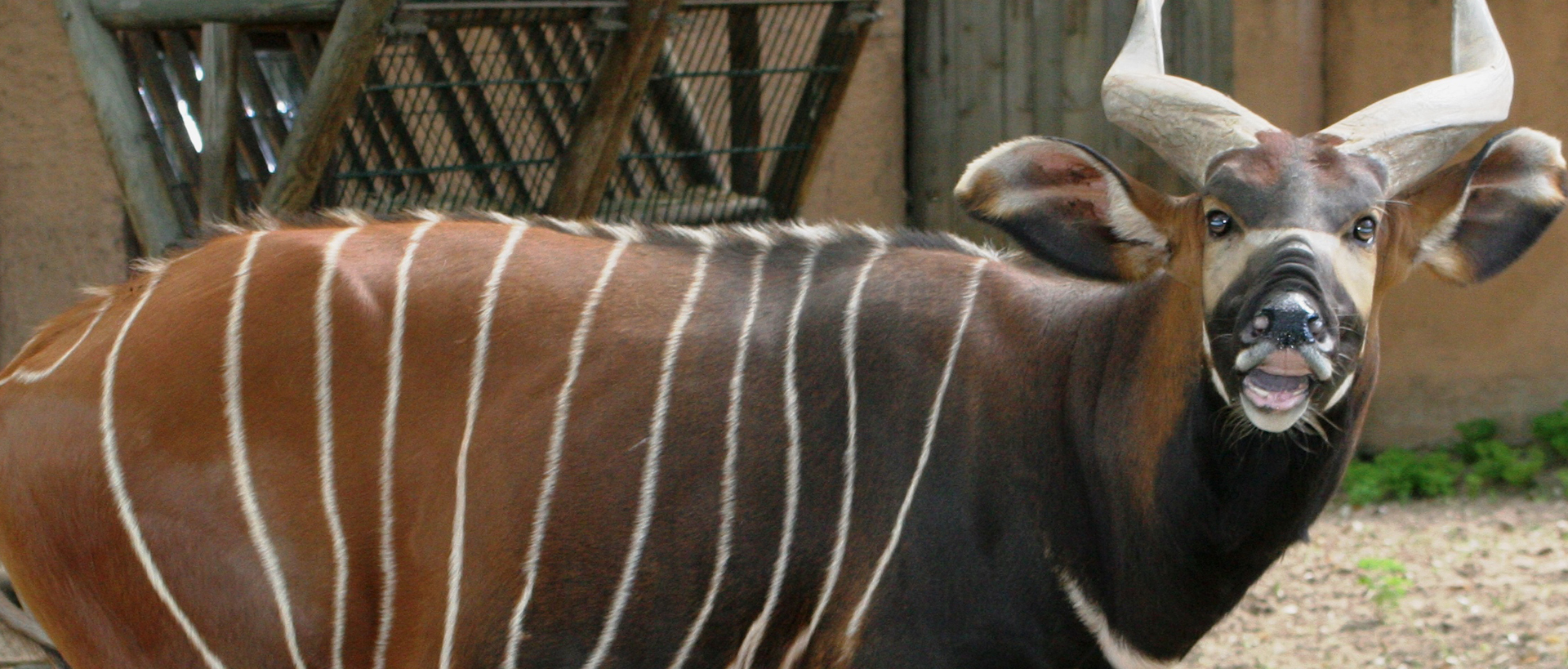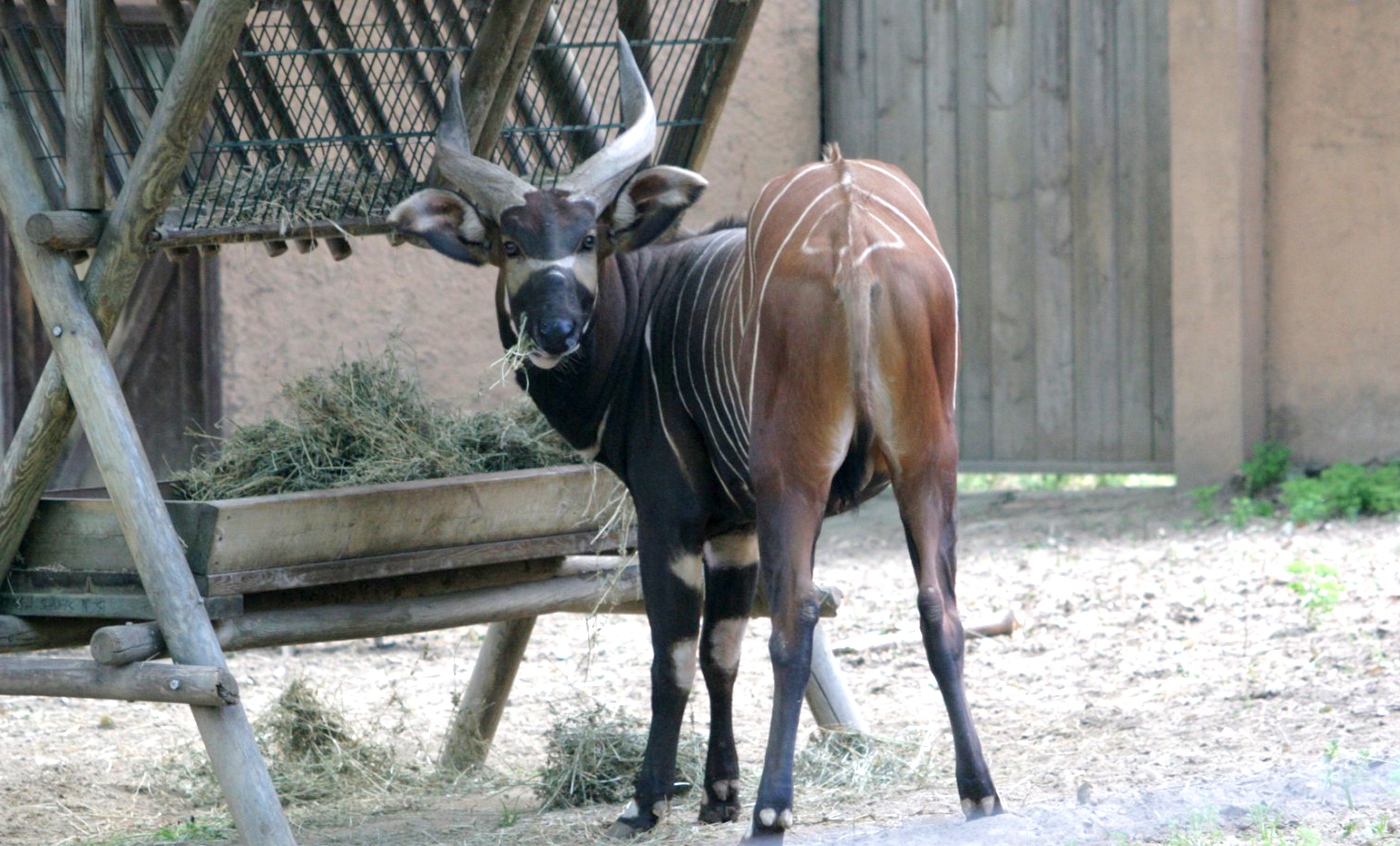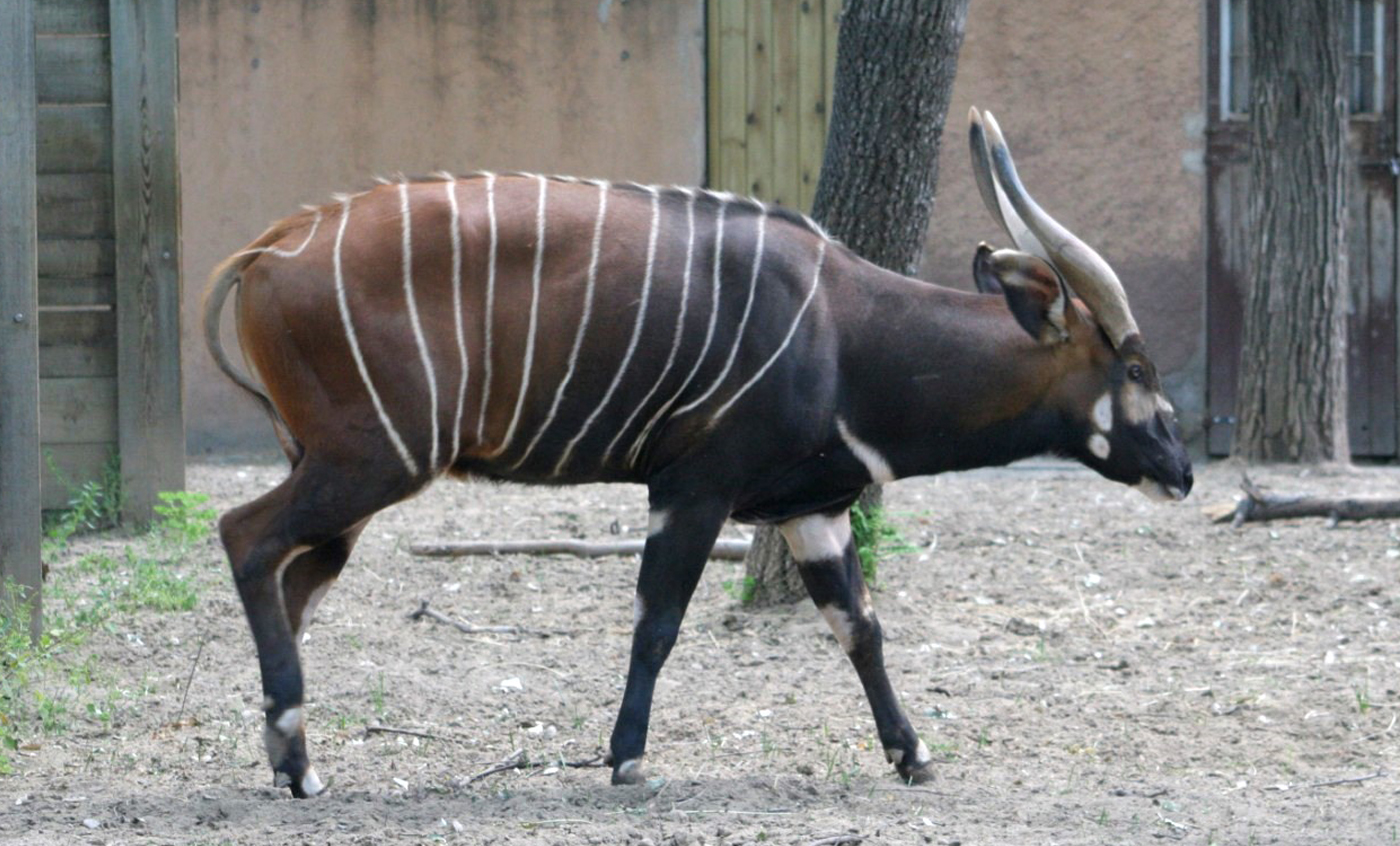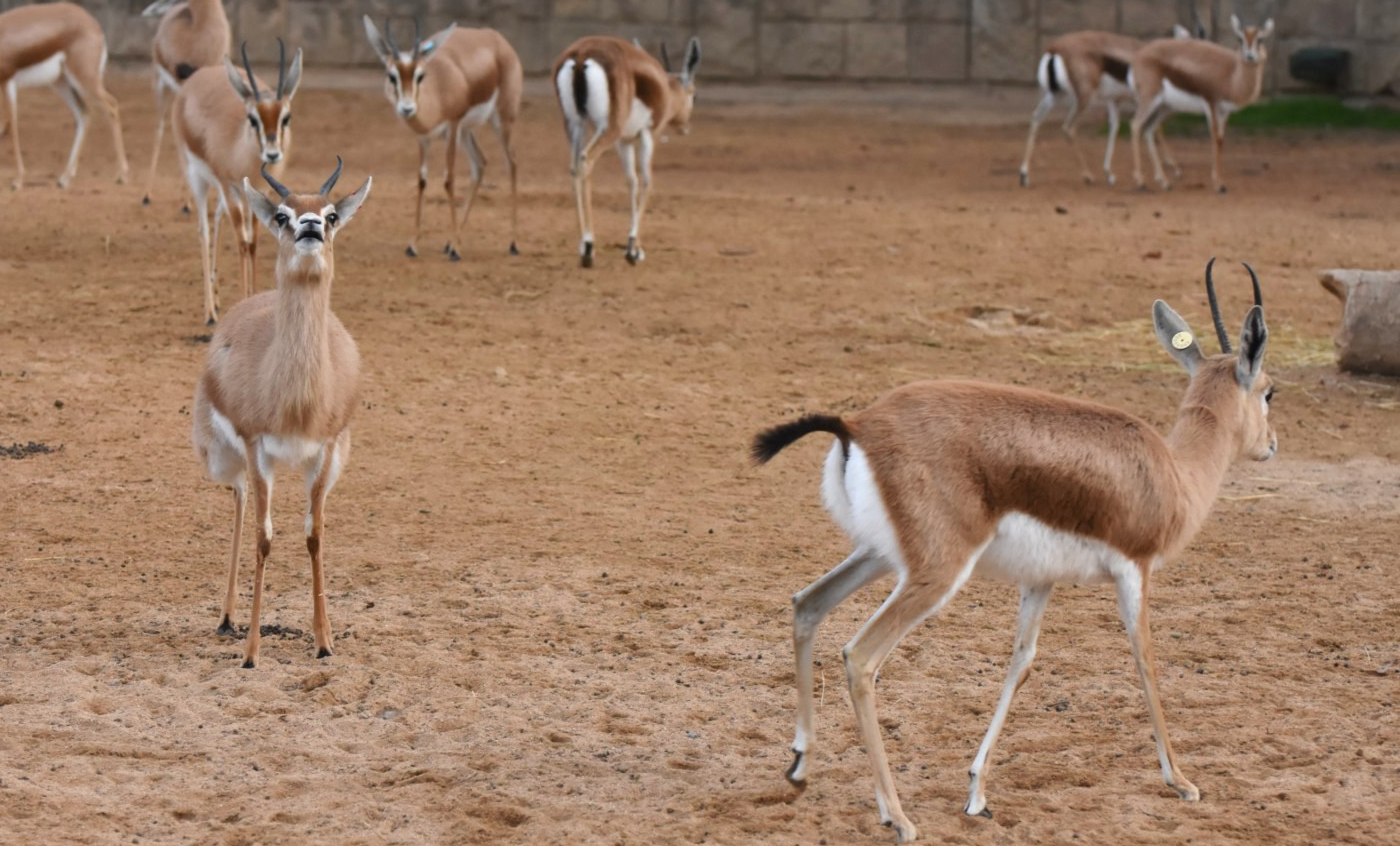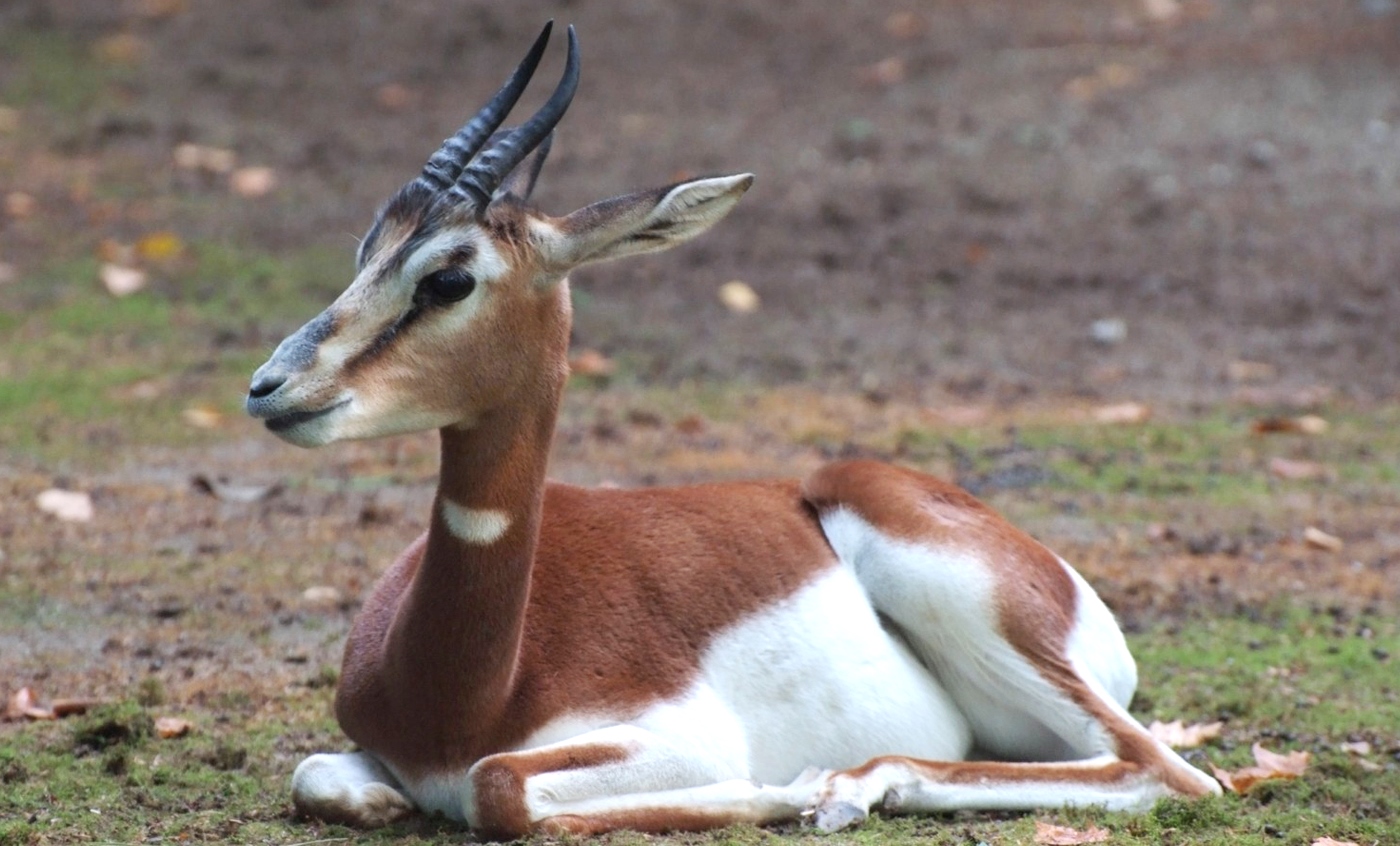Eastern bongo
The bongo is a large antelope that lives in plain and montane rainforests of central and western Africa. The eastern subspecies only lives in Kenya. Its habits are crepuscular and nocturnal and it can often be found near water, as it is a skilled swimmer.
It lives in couples or small family groups and, despite its considerable size, it easily goes undetected in the wild thanks to its colour, apparently eye-catching, but which really allows this species to perfectly camouflage in the forest.
Breeding program
Natural habit
Central Kenya.
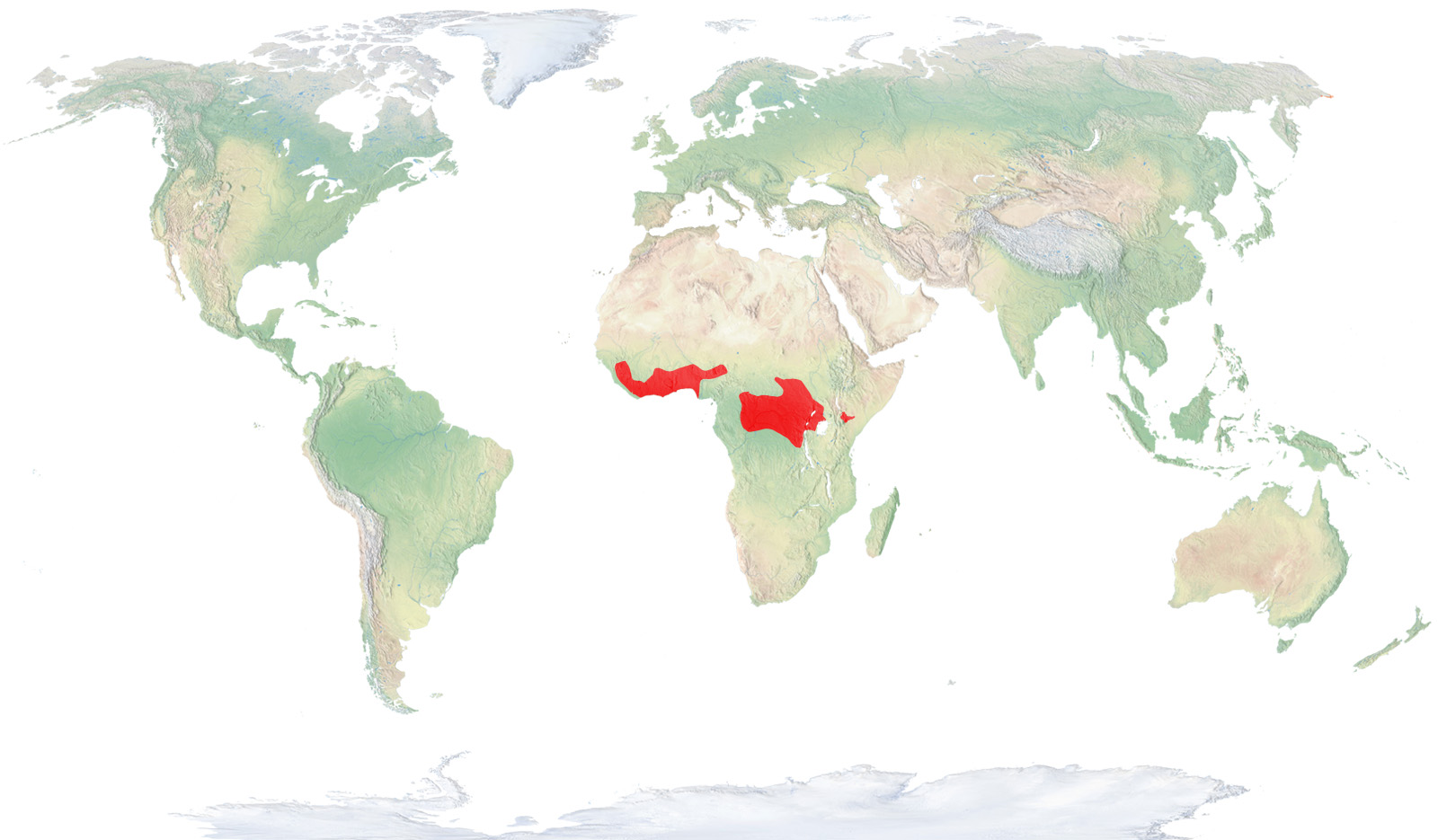
- Distribution / Resident
- Breeding
- Wintering
- Subspecies
Risk level
- Extint
- Extint in the wild
- Critically endangered
- In Danger
- Vulnerable
- Near threatened
- Minor concern
- Insufficient data
- Not evaluated
Taxonomy
Physical characteristics
Biology
Reproduction
Biology
The bongo is the largest rainforest antelope. Males can reach up to 1.30 m high, 2.5 m long and weight more than 400 kg. It is also the most colourful antelope, with a reddish-brown coat with twelve to fourteen vertical white stripes, and also white-striped dorsal crest and a series of light patches on the face, chest and legs. Its horns, spiral and lyre-shaped, are present in both sexes and can reach one metre long. This eye-catching colour actually helps them camouflage perfectly among the typical light and dark tonalities of their rainforest.
The eastern bongo lives in dense forests and montane rainforests of central Kenya, with small populations remaining in the Averdare National Park, Mount Kenya and the Mau Forest and Eburu Forest reserves.
It is a vegetarian animal that feeds on grass, tree and bush leaves, roots, fallen fruits and even bark from different plants.
Gestation lasts for a little longer than nine months and a single calf is born each time. Females reach sexual maturity when they are two and a half years, while males from three.
Its habits are crepuscular and nocturnal, remaining among dense vegetation during the day. It usually lives in couples or small family groups, although in areas without abundant predators it can form small herds of up to twenty members. Its most important natural predators are leopards, spotted hyenas and great pythons, who can capture young calves.
The main threat for this species is direct hunt by mankind and, especially, the destruction of its natural habitat. In the case of the eastern subspecies, it is also important to take the isolation of the small remaining populations into account for its decline.
The Zoo of Barcelona takes part in the EEP of this species.



